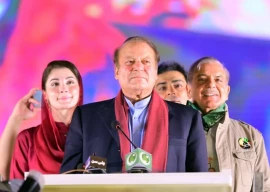
The argument is that the North America/Europe-based global politics is giving way to Asia-Pacific/South East Asia-based economic and political dynamism. The rise of the nations of this region and the increased global attention on this region, have created a strong perception of the decline of North American and European political and economic clout.
Some states of Asia have made major economic strides over the last two decades. These include China, Japan, South Korea, Malaysia and India. Several states are on way to building economic strength. These include Indonesia, Thailand, Vietnam and the Philippines. The success of these states can be attributed to several factors that include economic potential and growth, promotion of knowledge and technology, human resource development with greater emphasis on education, healthcare and improved living conditions, regional cooperation and interdependence, trade, investment and an open market, with movement of people, goods, services and ideas across the territorial boundaries of the states. These states have also defused or resolved intra-state and inter-state conflicts. In most cases, the issues of territorial boundaries and ethnic conflict have been taken care of. Consequently, this region has become a hub of economic development, trade and technological innovation.
The United States is pursuing what it describes as its Asia Pivot policy. China, physically present in the region, is building economic ties with the region and asserting its primacy. It is pursuing its One Belt, One Road strategy of linking China not only with this region but also with Europe by building roads and maritime links. Its China-Pakistan Economic Corridor provides China with a direct sea access to the Arabian Sea/Indian Ocean, where it faces less challenges than in the South China Sea. There are sources of conflict in the region that can upset the economic, trade and technological strides. These sources of conflict include North Korea, Taiwan and China’s claims on some small islands in South China Sea that are contested by Japan and Vietnam. The US supports these states against China and advocates the freedom of navigation in South China Sea as opposed to China’s efforts to assert its ascendancy in some areas of the South China Sea.
However, China and the US will not engage in a persistent cold or hot war in the Asia-Pacific region. They will build pressure on each other periodically and pursue cooperation in some areas and conflict in the other. Both have cultivated trade and investment relationships with each other at the state and private sector levels which they would not want to undermine.
The Asia Pivot policy is expected to cause a decline in US interest in South Asia. However, the US will not totally abandon the region as was done in October 1990. It will maintain economic, political and military ties with Pakistan whose military is viewed as an effective deterrent against terrorism. It also acknowledges Pakistan’s role in stabilisation of Afghanistan. The US views India as an important market and a source of stability in the region. It could rely on India for containment of China, if and when needed.
What are the lessons for Pakistan from the enhanced global focus on the Asia-Pacific region and the Asia Pivot policy? Pakistan should seek strength from within for pursuing its foreign policy agenda. Pakistan must assign the highest priority to controlling extremism and terrorism, and contain the role of the Pakistan-based non-state violent players. As long as Pakistan does not improve governance and devotes more resources to education, healthcare, basic civic facilities, Pakistan cannot come out of its current predicament. Emphasis should be on acquisition of knowledge and technology which are the instruments of power in the 21st century.
Puritanical ideological approaches are no longer valid as the policy framework. Pragmatic economic considerations need to override other considerations. This calls for increasing Pakistan’s economic relevance in the international system. What are Pakistan’s trade, investment and technological relations with the rest of the world? It also needs peace on its borders. This assigns importance to Pakistan’s relations with the neighbouring states, especially India and Afghanistan. These relations suffer from deep distrust. Iran, another neighbour, is the newly emerging power after the resolution of the nuclear dispute with five permanent members of the UN Security Council and Germany. Not cultivating Iran in terms of economic relations, trade and gas pipeline, will be a major failure of Pakistan.
Pakistan links four regions: Central Asia, China’s Xinjiang region, South Asia and the Middle East. Its economic future is linked with gas pipelines, roads and railways across Pakistani territory, linking these regions. The China-Pakistan Economic Corridor offers new opportunities for economic revival of Pakistan. However, this project can run into serious difficulties if Pakistan cannot offer security to Chinese workers and Pakistan’s internal controversy on the route of the Corridor is not resolved. The government of Pakistan needs to be transparent on the route of the Corridor and the industrial and power projects to be set up along the Corridor. What would be Pakistan’s share of the cost of the Corridor and how much would China extend in grants and loans? No information is available on these matters.
Pakistan faces serious internal threats because little attention is being paid to salvage the faltering economy, especially the economic issues that concern the common people. There are little signs of Pakistan eliminating extremism and terrorism altogether in the near future. Internal political and societal harmony is a prerequisite for successful democracy and improving the economy. Pakistan can attract as much attention as is currently being drawn by Southeast Asia and the Asia-Pacific region, provided it assures the world that its territory is secure against terrorism and it is working towards developing positive relevance with the rest of the world in terms of economic relations, trade, investment and the open market.
Published in The Express Tribune, March 21st, 2016.
Like Opinion & Editorial on Facebook, follow @ETOpEd on Twitter to receive all updates on all our daily pieces.

























1714024018-0/ModiLara-(1)1714024018-0-270x192.webp)









COMMENTS
Comments are moderated and generally will be posted if they are on-topic and not abusive.
For more information, please see our Comments FAQ